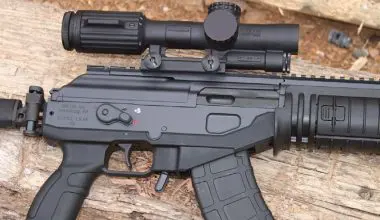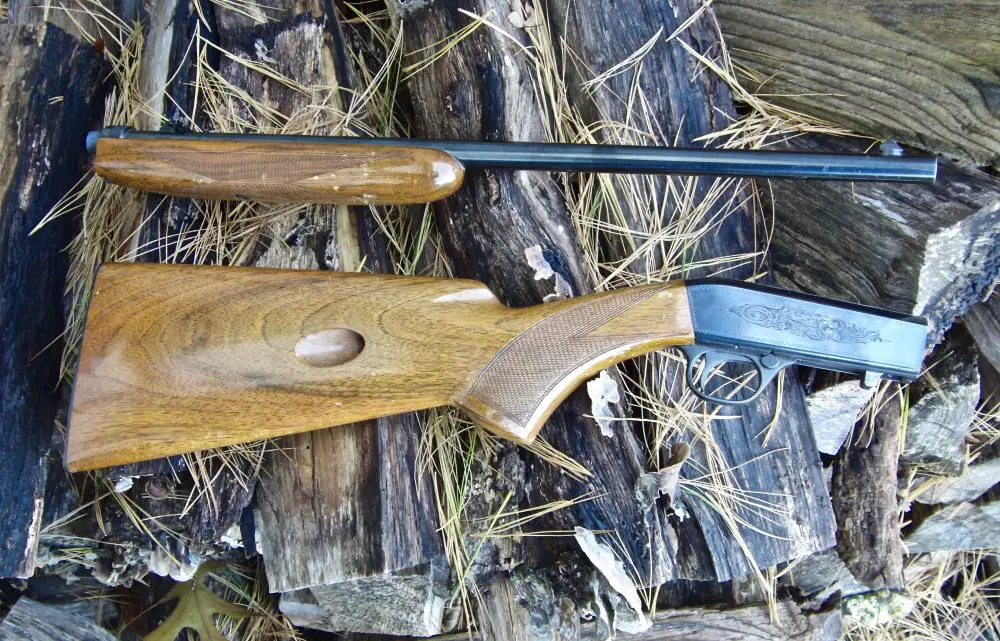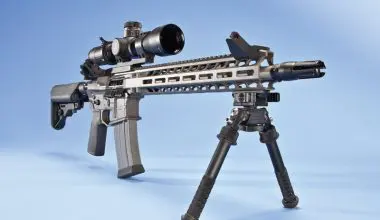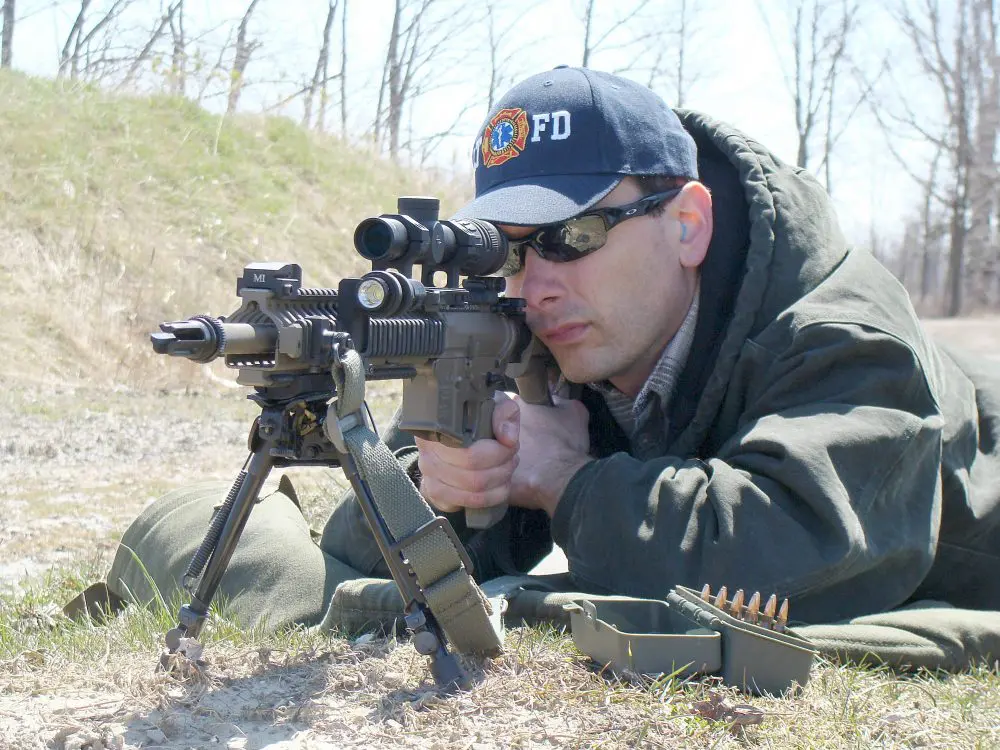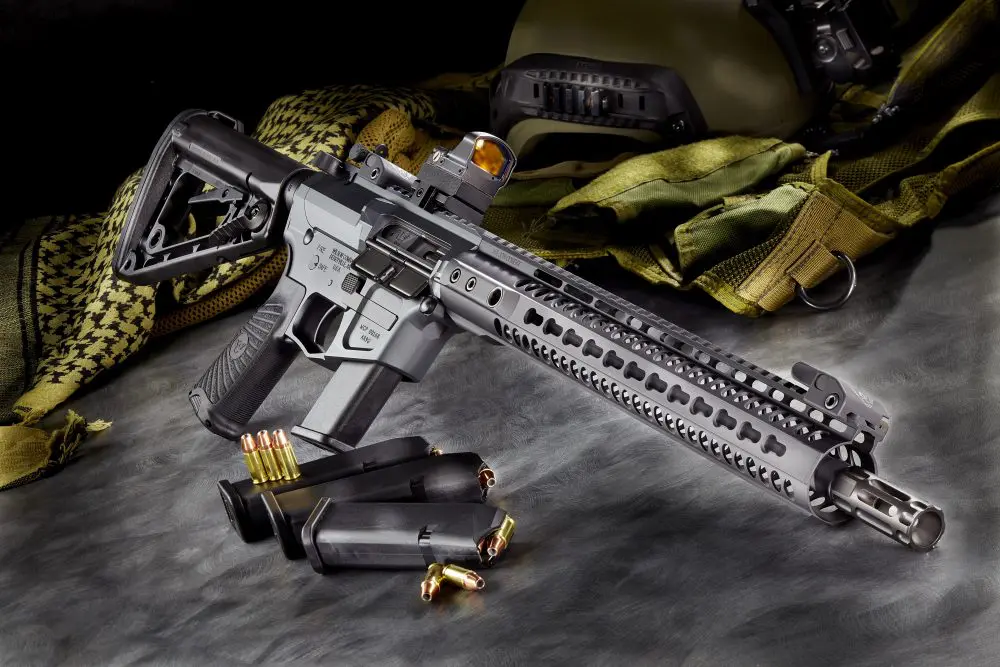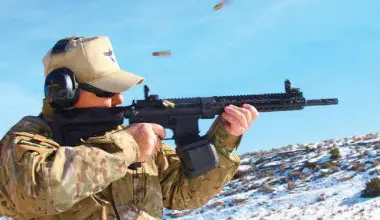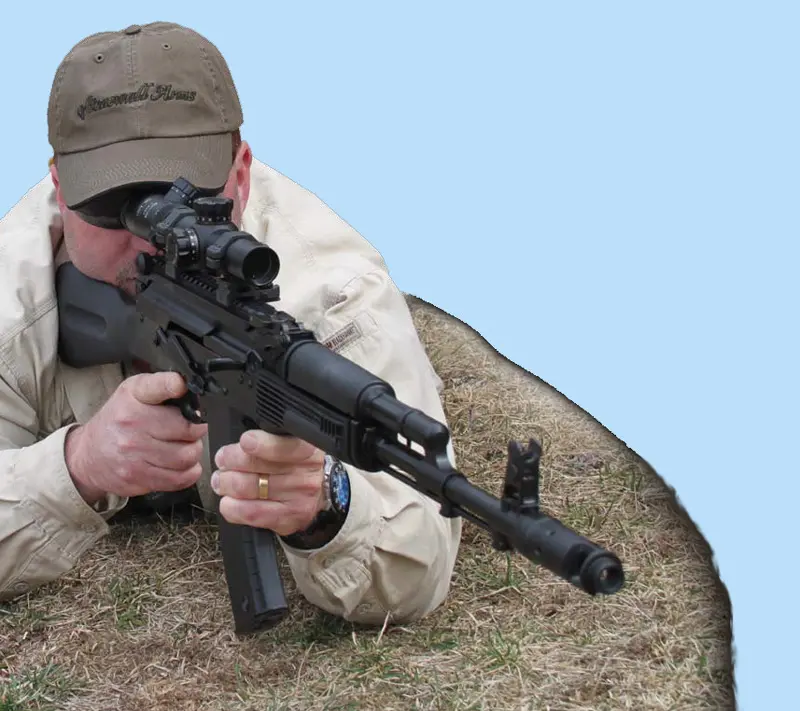
It has an operating method pedigree stretching back decades farther, proven by seeing action in all conditions and terrains. The rifle in question comes with a flat top rail along the receiver for easy mounting of optics or accessories.
Most would be thinking of the AR right now. But I will put forth the Krebs Custom AK-74 equipped with Krebs’ Kalashnikov Rear Sight Rail (KRSR) System.
Table of Contents
KREBS CUSTOM
Krebs Custom was one of the first AK “smiths” of note stateside, with pioneering work on Izhmash Saiga rifles and shotguns. Though modified to meet import requirements via sporter stock with no pistol grip, at the heart of the Russian Saiga rifle is an AK operating system.
Modifying the Saiga back into the more familiar AK profile is a relatively well-known and straightforward process that involves moving the trigger guard forward to make room for a pistol grip, replacing the fire control group and installing an AK stock of choice. Krebs Custom takes this a step further by installing/ tuning a G2 trigger along with dehorning the Saiga’s edges and other proprietary work methods that create one of the smoothest and most reliable AKs on the market.
The most intriguing part of this Krebs rifle is the proprietary KRSR rear rail system. The KRSR impetus was derived from the Polish Beryl mounts but with additional Krebs Custom refinements.
I want to detail the KRSR’s features and manufacturing points to highlight what Krebs is making available to the evergrowing AK-owning gun culture.
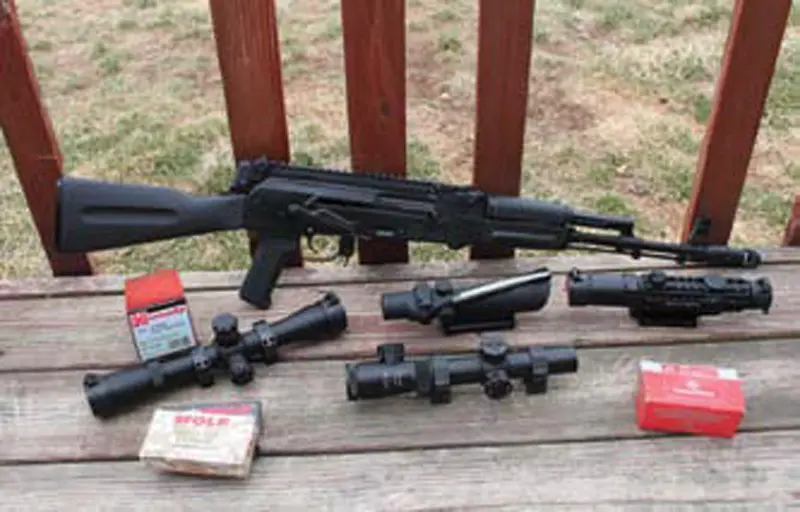
KRSR SYSTEM
The Krebs Custom KRSR System offers a quantum leap forward in versatility and accuracy for users of Kalashnikovsystem rifles and light support weapons. The KRSR rail is designed to attach to the rear sight support and tang of the rifle. It’s made of 7075 aluminum and anodized black. It provides the user with a 1913 rail over the receiver cover on a standard-pattern AK.
The KRSR provides an integral M16A2 aperture rear sight with both battlesight and long-range apertures that are windage and elevation adjustable. The built-in KRSR AR-type open sights provide a 60% greater sight radius than a standard AK. The KRSR pivots up to allow for normal maintenance and repair, while maintaining sight zero for mounted optics.
The locking mechanism does not attach to the rear trunnion, but rather to the buttstock tang, using the original tang screw. The KRSR uses an AR-type captive push-pin to lock the rail in place at the rear against a doll-head protrusion.
To release the rail, the push-pin is withdrawn, allowing the locking block to be pulled to the rear, out of engagement with the doll-head. The push-pin prevents the locking block from moving to the rear under recoil. This ensures a tight, consistent lockup that ensures that the rail maintains a consistent zero time after time. No gunsmithing or modification to the rifle is necessary.
Other types of AK receiver rail systems have been making their way onto the market lately. Most rely on the AK’s recoil spring interface with the dust cover for rear attachment. Yes, the Krebs KRSR costs more than some of the other rail options, but this is not unusual, considering Krebs’ product engineering and quality of manufacturing. The cliché that you get what you pay for is applicable with the KRSR.
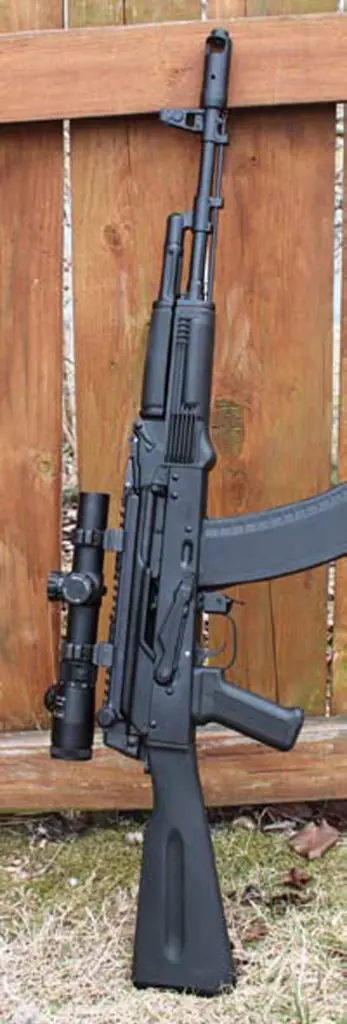
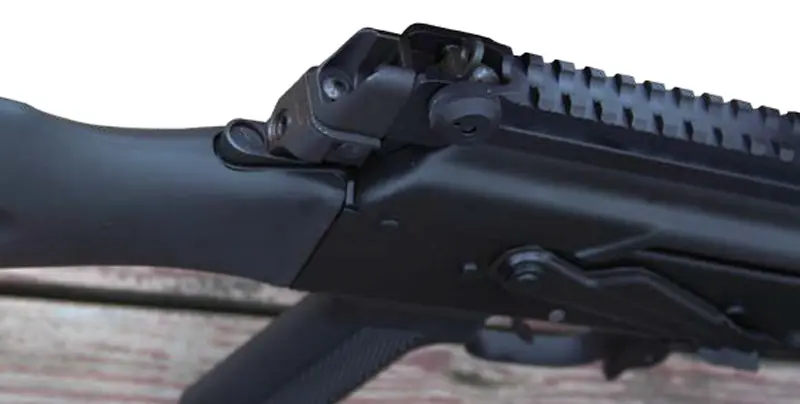
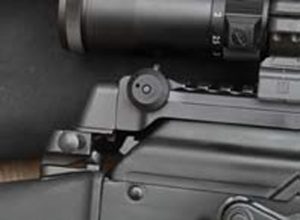
The Krebs Custom AK-74 with KRSR features the same great handling characteristics and reliability the AK family is renowned for. The KRSR rail adds about a pound of weight to the platform, but is well worth it in terms of performance enhancement in mounting optics.
The Krebs AK-74 weighs 8 pounds and measures 37 inches long with its 16.5- inch barrel. The minimal recoil impulse of the 5.45x39mm, combined with an effective muzzle brake and optic of choice, makes shooting accurately at speed very possible. Steel MGM man targets were routinely struck at 200 to 250 yards with rounds sent downrange rapidly.
This illustrates both the ergonomics of the rifle and overall accuracy of the Krebs AK-74. The cheek weld was slightly higher than normal with the KRSR rail, but in no way awkward. A basic strap-on cheekpad would allay concerns of anyone who might find it more problematic than I did.
TESTING WITH OPTICS
It was decided to take full advantage of the Krebs KRSR by mounting multiple optics for testing. The first two were a 3.5X Trijicon ACOG TA11H model with green horseshoe reticle and a Leupold Mark 4 CQ/T 1-3X.
In addition to low-magnification battle optics, a Leupold Mark 4 2.5-8X was employed to ascertain the Krebs’ 5.45mm accuracy potential. This Leupold scope could be left on if an individual user chose to go this route—a low power setting for quick target acquisition at close range, and a quick turn of the knob to 8X for longer or precision shots.
The optics most typically left on the Krebs 5.45mm after accuracy testing are the Trijicon ACOG or Leupold Mark 4 CQ/T. As many “maturing” shooters can attest, the single focus plane reticle is easier to shoot accurately than coordinating front and rear sights. The ACOG sight assisted in engaging targets at close distances, with its green reticle easy to pick up rapidly. Both sights offer the capability to engage multiple targets in rapid sequence compared to open sights, while at the same time providing adequate accuracy out to a couple hundred yards.
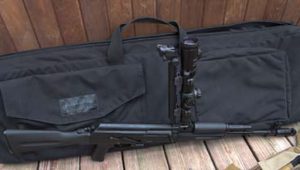
Marc Krebs suggested I try a new Hi- Lux/Leatherwood scope. Considering Marc’s experience, I thought it prudent to follow his prompt.
Hi-LUX/LEATHERWOOD OPTICS
The Hi-Lux/Leatherwood Optics CMR 1-4×24 was designed for when a shooting situation gets up close and personal. The CMR (Close Medium Range) has 1X- 4X magnification based on a compact 30mm tube. This relatively short tube scope does not add a lot of weight to the rifle and, thanks to the large diameter of the scope tube, it lets in a lot of light for a bright target image.
Hi-Lux/Leatherwood literature points out: “… an extremely practical circular reticle … aids in quick target acquisition by drawing the attention of the shooter’s eye to the center of the scope. Along these same lines, to insure that the target is fully visible, the reticle has only a horizontal crosshair, with a partial vertical lower crosshair. The upper half of this reticle leaves the scope clean and uncluttered. Plus, the lower crosshair features short bar aiming points calibrated for standard .223 and .308 service ammo, which are very precise out to 600 meters. The center dot and the small circle of the reticle are available with either green or red illumination.”
TEST AMMO
The Krebs 5.45mm with KRSR was evaluated at Echo Valley Training Center (EVTC). In conjunction with the individual training bays, EVTC features multi-stepped target berms strewn with reactive MGM steel targets, fluid-drained automobiles, and moving targets at ranges varying from 150 to 350 yards. For testing, I used 60- and 70-grain 5.45x39mm Wolf Ammunition.
I also accessed some surplus 53-grain 5.45×39 ammunition. This is loaded with the 7N6 “poison pill” bullet that first gained notoriety in the Soviet-Afghan War. Russian designers basically constructed the 53-grain FMJ with an air cavity behind the tip of the bullet. This causes the bullet nose to deform when penetrating a target, making it tumble, which is devastating when it strikes flesh.
One downside typical of most surplus ammunition is that it utilizes corrosive primers. The Russians and other ex-Soviet Bloc states insist on using these due to concerns with cold weather ignition and the long-term storage capabilities offered by corrosive primers. The Wolf 70-grain load produced approximately 2,600 feetper- second (fps) and the Wolf 60-grain nudged 2,900 fps, with the 53-grain surplus ammunition clocking in at 3,000 fps.
Two 5.45mm ammunition loadings of special interest were chosen specifically for testing with the Krebs 5.45mm with KRSR: Hornady 60-grain VMax and a Dynamit Nobel 59-grain HP loading I was fortunate to run across a couple of years ago when acquiring a couple of cases. The long anticipated Hornady 60-grain VMax bullet mated to steel cases is starting to arrive on dealers’ shelves in quantity. It delivered accuracy in the 1.5-inch range at 100 yards, with the Dynamit Nobel producing similar results. The Krebs 5.45mm KRSR combined with optics and quality ammunition in the form of the Hornady VMax is what many AK connoisseurs have been waiting for.

Much has been written in magazines and on various Internet forums about what it would take to turn the AK into more of a general-purpose rifle. The hold-up to more effective use of the AK at ranges past 200 yards usually revolves around solid scope mounting and ammunition of greater quality than what is offered in the surplus realm. The Krebs KRSR and Hornady VMax ammunition solve this conundrum.
RANGE TIME
Range evaluation commenced with a function test firing several magazines in rapid succession. This is a good way to establish a baseline for reliability. Let’s face it, if an AK-type weapon does not have pristine reliability, its major attribute is nullified. A 100-yard open sight zero confirmation took place with the KRSR M16A2 rear aperture after functionality was established.
The quick-release A.R.M.S. lever mounts on the Hi-Lux/Leatherwood scope allow for quick access to the builtin KRSR back-up iron sights, justifying making sure the irons are properly sighted in. Accuracy with the Wolf Ammunition 60- and 70-grain loads hovered in the three-inch range at 100 yards. The surplus Bulgarian mirrored this performance. As mentioned above, the Hornady VMax produced 1.5-inch groups. The Krebs AK-74 rifle equipped with modern high-quality optics mounted on the KRSR will rival any platform in terms of effective accuracy and reliability.
Other range tests consisted of completing several runs at a carbine course set up at EVTC. Several ISPC-style man targets were engaged from different firing positions. Multiple shots were fired at each target and a magazine change was mandated before leaving cover. The various stages consisted of three different styles of barricade, including one coming through an operable doorframe. Time was stopped by engaging two steel MGM targets placed approximately 200 yards downrange.
One gets a good sense of the way a weapon handles, along with its reliability, from the sum of ammunition expended in the short time frames characteristic of these Team Tactics drills. The full gamut of rifle manipulation is encompassed in Team Tactics training evolutions—handling around cover while engaging designated targets, accuracy to effectively strike at both distance and CQB ranges, magazine changes, and reliability once a weapon gets heated up.
ANCILLARY AK PRODUCTS
The growing popularity of AK products translates into ancillary items being more readily available. This is represented by two US PALM products used in conjunction with the Krebs 5.45mm—the AK Attack Rack and Defender Series chest rigs. The AK Attack Rack chest rig is a secure low-profile platform for four AK magazines and four pistol magazines. It can be worn over hard or soft body armor and is built to military specifications out of 500d Cordura nylon for durability and minimal weight.
The US PALM Defender vest comes with a Level III soft armor insert with the ability to install hard SAPI plates both front and rear. The Defender is US PALM’s effort to make more affordable products available to security-conscious citizens and law enforcement who have to purchase their own gear. The Defender AK model mounts quickly and offers body armor protection along with the capability to carry three AK magazines and three pistol magazines.
If one wanted to go all the way with rails, Krebs’ own AK quad rail forend would be an easy install on the AK-74 and provide a means to mounts lights, lasers, vertical foregrip, and more.
The Krebs Custom AK-74 with KRSR could be the answer to fulfilling a variety of roles, including DMR rifle and generalpurpose patrol rifle. This is a positive reflection on what Krebs has achieved with their KRSR rail enhancement. It is a true force multiplier for the AK.
